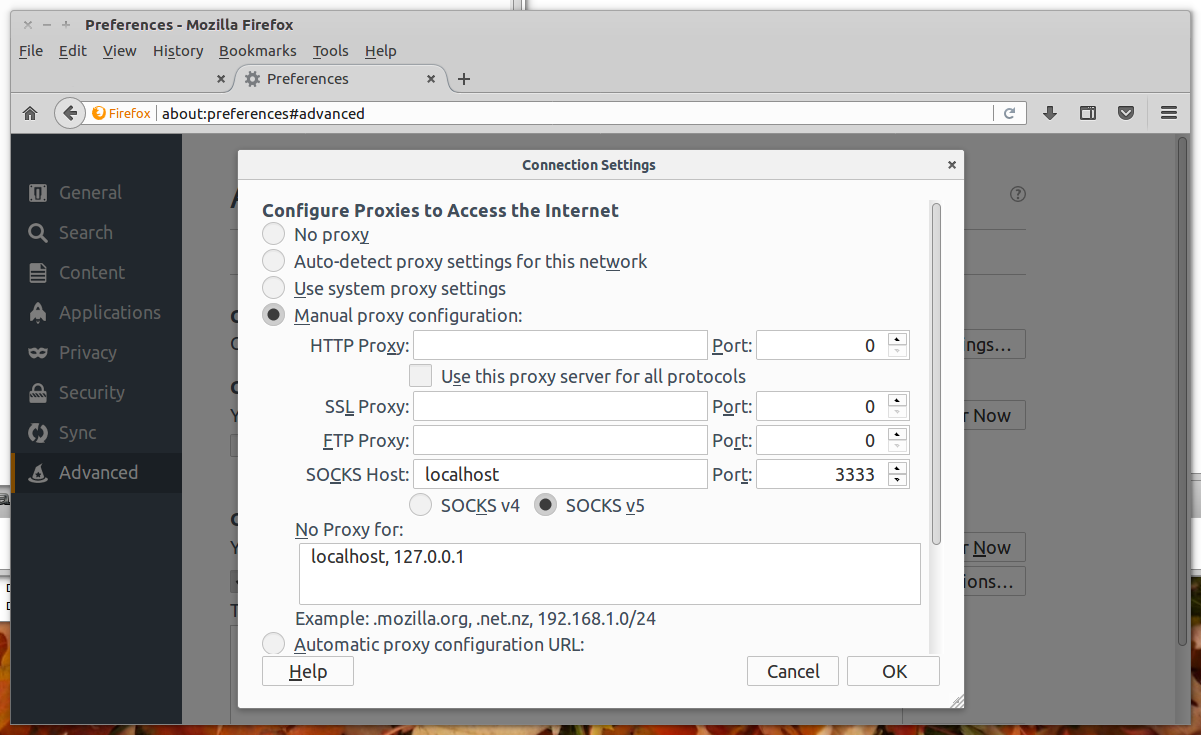


SOCKS5 has more flexibility and security than other types of proxies. HTTP Proxy vs SOCKS5 Comparison Table: Proxy.ģ. Additionally, the fact that SOCKS5 can forward TCP and UDP traffic, and can be used with authentication, makes them completely different from HTTP proxies. These types of proxies are suitable for a wide number of applications. SOCKS proxies are considered lower-level, as they can take almost any type of traffic or protocol. HTTP proxies do not offer any type of authentication. HTTP proxies can forward requests and in some cases modify certain headers, such as User-Agent, X-Forwarded-For, Via, etc). They are high-level types of proxies because they only work with HTTP or HTTPS protocols, so they can only be used through your web browser. HTTP (or HTTPS) proxies were built to handle a specific type of traffic. Additionally, it can use Secure Shell ( SSH) encrypted tunneling to enhance security. It can establish a TCP connection with authentication, so only authorized users can access the proxy server. It is an optimized version of SOCKS4, which supports a variety of authentication methods and provides means to forward UDP packets. SOCKS5 is approved by the IETF under RFC 1928.It does not support authentication nor UDP connections. Additionally, access to this “tunnel” can be restricted via authentication or IP. Internal users can go through the firewall via the SOCKS5 proxy, without needing to modify firewall rules.
#Ssh proxy socks5 free#
The protocol establishes a TCP session (or UDP) through the firewall allowing source and destination, free communication through the firewall. As you might already know, firewalls block IP-based traffic but, when deploying a SOCKS proxy within a firewall, traffic can be allowed. One of the most popular use cases of SOCKS is to facilitate the administration of network firewalls. Then, the SOCKS proxy server establishes a new (TCP or UDP) connection with a new IP address to the target website or app’s server. The SOCKS5 client (such as a web browser HTTP, or P2P platform) opens a TCP (or UDP) connection to the proxy server. SOCKS5 on your local computer simply takes your app’s traffic and routes it through a proxy server on the Internet. The SOCKS5 proxy server acts as the intermediary between two different networks (i.e. The SOCKS server uses TCP port 1080 to accept incoming connections. Since SOCKS works between application layers (7) and TCP/UDP (4), it can handle different types of requests, including HTTP, FTP, SMTP, etc., and applications like P2P, web browsing, email, and more. SOCKS works at the session layer (layer 5 of the OSI model). With SOCKS, you can route any type of traffic (TCP or UDP) created by any application through a proxy server. The protocol was designed to improve client-server applications using TCP or UDP connections. SOCKS is a network protocol based on the old Secure Sockets to tunnel traffic through a server. How Can You Get Started With a SOCKS5 Proxy?.SOCKS5 proxy vs VPN for torrenting and P2P.Traffic-intensive web scraping and SEO.Unblock geo-restricted content or bypass bans.Bypass Internet filters and network restrictions.What Are The Benefits of a SOCKS5 Proxy?.Another advantage is when the proxy is physically located in an offshore data center (and not locally), so the user can access geo-restricted content, like Netflix or Hulu, or bypass censorships. One benefit of masking your IP with an intermediary such as a proxy SOCKS5 is that it protects your online anonymity. The SOCKS5 proxy masks the IP of the source with its own and forwards the source request to the right destination using its own IP. The proxy acts as an intermediary- intercepting all traffic between source and destination.Ī SOCKS5 proxy server is a great alternative to a VPN, as it also “intercepts” and protects the traffic from exposing information at the destination. A SOCKS5 (SOCKet Secure version 5) proxy is a type of proxy server that sits between you (source) and destination (web app or site).


 0 kommentar(er)
0 kommentar(er)
